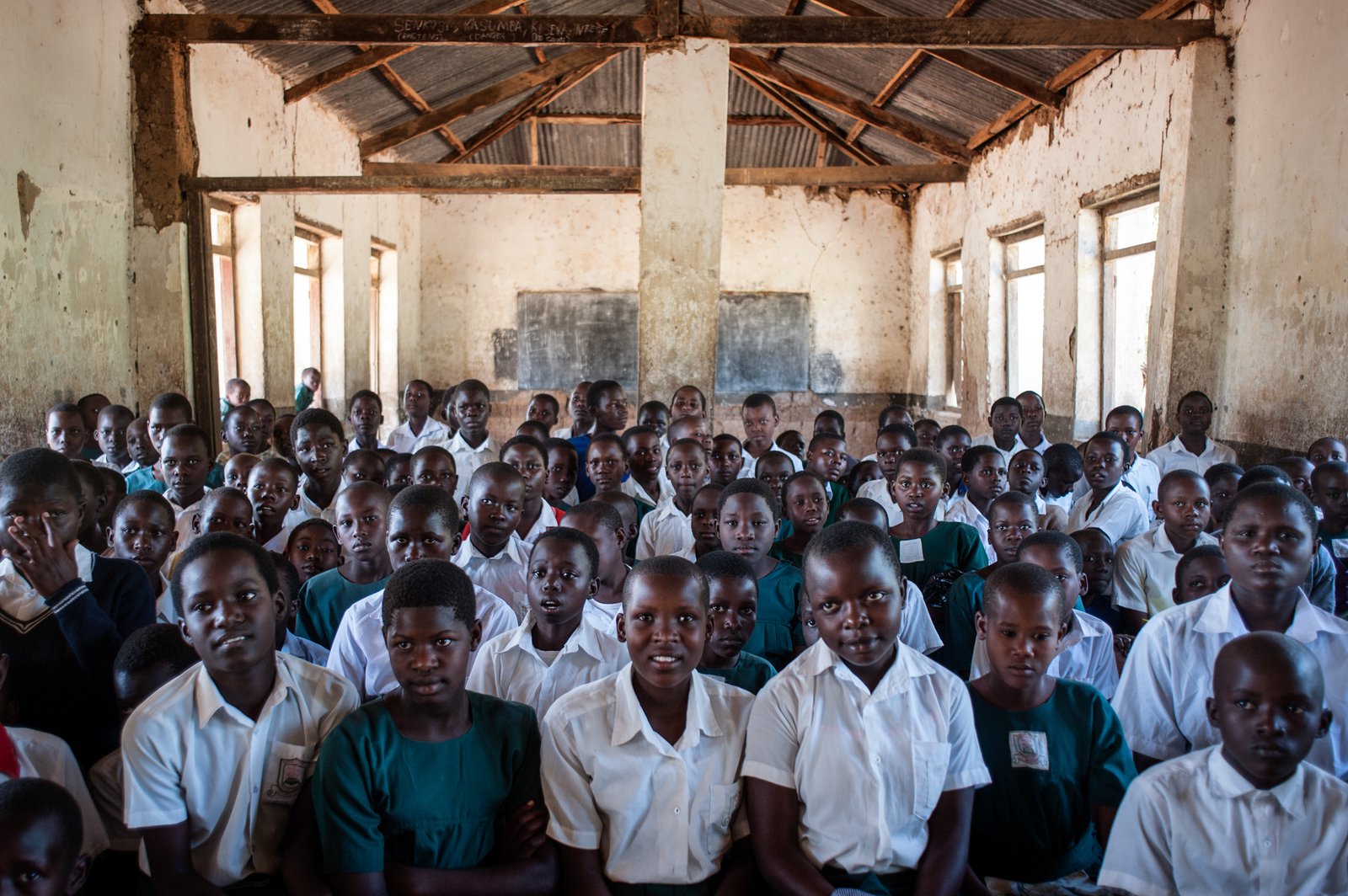Most people are infected with human papillomavirus (HPV) within a few years of becoming sexually active, but because most infections clear up on their own, it never bothers people. For about 10 percent of infected women, however, precancer develops. And if that’s not treated, some of them will suffer—and perhaps die—from advanced cervical cancer.
Aisha’s father, Musa, shared their story.
“The sickness was long,” Musa said. “From the time my wife fell sick, it took one-and-a-half years. We moved through hospitals until she couldn’t take it anymore. She bled so much.”
How to reach a preteen
Cervical cancer is a leading cause of cancer death among women in low- and lower-middle-income countries (LMIC). More than a half-million new cases and 266,000 deaths occur annually, with more than 85 percent of deaths occurring in LMIC. When HPV vaccines emerged as a highly effective tool to prevent cervical cancer, we dove into finding the best way to get them to girls like Aisha—so they never have to suffer like their mothers and aunties.
The vaccines are nearly 100 percent effective against the most important cancer-causing types of HPV strains, as long as girls are vaccinated before they’ve been exposed to the virus—in other words, before they become sexually active. The World Health Organization recommends two doses of HPV vaccine for girls aged 9 to 14 years, and three doses for girls aged 15 years and older and those who are immune compromised or HIV positive (regardless of age).
Few countries routinely vaccinate this group, so new approaches are needed to reach them. Aisha was one of 10,000 Ugandan girls who received the vaccine in schools and clinics as part of a demonstration project. The data from the project provided key evidence to the government of Uganda about when and how to best introduce the cervical cancer vaccine nationwide. Our findings also contributed to the decision by Gavi, the Vaccine Alliance, to subsidize HPV vaccines for the world’s poorest countries.

At Nakasangola Primary School, one of the sites for PATH's HPV vaccine project, preteen girls were eager to talk about the importance of vaccines to prevent cervical cancer. Photo: PATH/Will Boase
Aisha’s old primary school, which was among the schools where the demonstration project was held, was filled with rambunctious kids who were being let out for the holidays. But one classroom was still filled with girls who wanted to talk. When asked who knew about cervical cancer, the hands went up.
“Cervical cancer is a disease in which the cells go out of control,” said 11-year-old Veronica. She added, “I don’t want to die of cervical cancer. I want to be a doctor and reduce the rate of people dying in my country.”
Aisha wants to be a doctor, too. She still remembers the day she got the vaccine under the school tree. She was happy to get it, she said. If she does indeed become a doctor, she likely won’t see much cervical cancer in her practice because Uganda will be routinely vaccinating all its girls and offering cervical cancer screening and treatment to adult women, too.
“Cervical cancer is a disease in which the cells go out of control. I don’t want to die of cervical cancer. I want to be a doctor and reduce the rate of people dying in my country.”— 11-year-old Veronica from Uganda
Supporting global vaccine introduction
PATH’s Center for Vaccine Innovation and Access works with developing countries to create tailored approaches to vaccine introduction and to provide education and training for families, decision-makers, and health care providers. We also work with vaccine producers and distributors as well as governments to identify and resolve the logistical challenges of procuring, transporting, storing, and administering new vaccines.
Many countries have now gained valuable lessons about effective methods for garnering parental acceptance and reaching young adolescent girls with the HPV vaccine, at relatively low delivery costs. As of 2017, more than 40 LMIC have delivered HPV vaccines through demonstration projects and an additional ten such countries include HPV vaccination in their national programs.



